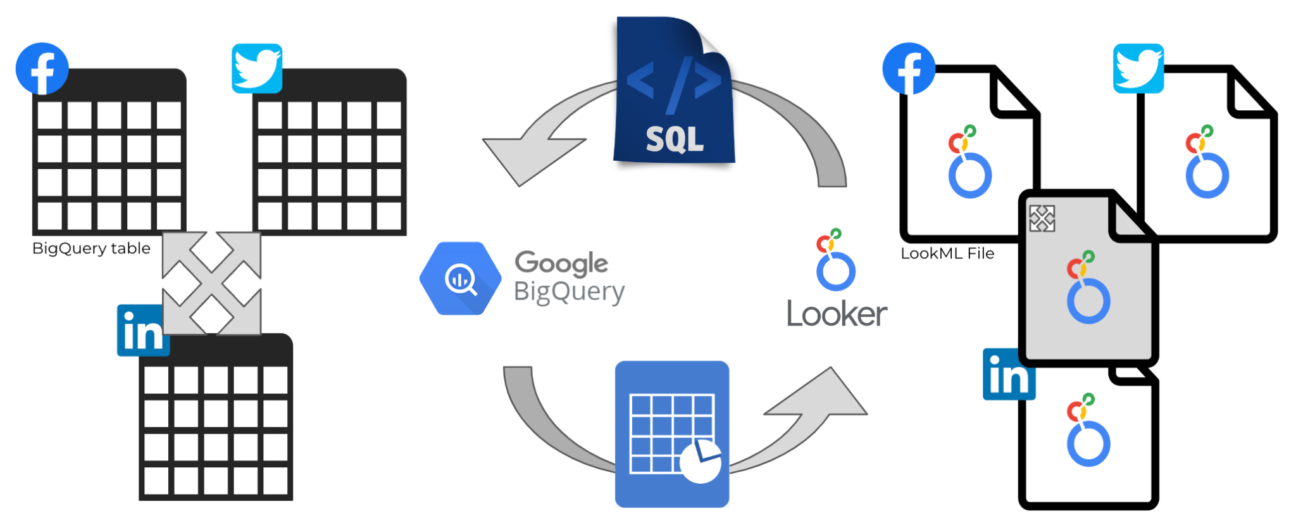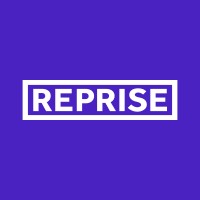This story explained in a video
Watch how Sven Hermans, head of data & analytics at Devoteam G Cloud & Vincent Spruyt, Reprise Digital & Bojan Pavlović, Smart Analytics Sales Engineer at Google Cloud Companies explain this customer story at the Devoteam G Cloud Day 2022.
About the customer
Reprise Digital, part of the IPG Mediabrands group, is the world’s largest performance marketing network, offering a full suite of crafts designed to deliver customer flow. With over 3,000 experts in 68 offices in 48 markets, they offer a complete suite of crafts designed to deliver customer-centric performance marketing.
The Problem / Challenge
There was no unified way of doing analytics across all of Reprise Digitals clients:
- Data analysts were spending 75% of their time manually creating reports
- Most of those reports were built ad-hoc and different every time
- The used technologies were fragmented across the world, across crafts, and even within markets.
- An overall infrastructure would be too much of an investment for just one market, but on the other hand, a centralised solution would create a bottleneck.
- There was a need for more real-time analytics and a proper alerting framework
- Onboarding a new customer and providing them with analytics on their marketing data was a process of weeks
The introduction of a new platform would also impact the current employees in their daily work: training and support during this transformation would be necessary for a successful roll-out. Change management in a rapidly changing environment would be an added value as well.
The Goal
Creating a unified way of doing data analytics across all of Reprise Digital’s customers to drastically reduce time-to-insight. The purpose is to provide the performance metrics of marketing platforms to the fingertips of the data analysts. The set-up has to be done in a consistent way across the globe in a self-service environment.
Having a standardised data model would allow for developed BI, ML and AI use cases to be seamlessly shared within the organisation. Also, this would enable analytical insights over different channels, customers and markets.
To achieve these goals, the following challenges needed to be addressed
- The global distribution of customers, and the need to have the customer’s data stored in the customer’s region.
- The creation of a standardised data model across channels and customers
- Providing every customer’s environment with the full flexibility of adapting and/or extending the framework to their specific needs
- The versioning and automated deployments of the framework
Next to technical goals, Reprise Digital set the goal to increase adoption throughout the different regions and markets. This supports the company’s overall goal to improve the end-user journey.
The Solution
With the clear goals in mind, we started to design RAPID, the distributed data marketing platform on Google Cloud. Within the Google Cloud organisation of Reprise Digital, we leveraged folders and projects to create an hierarchical structure of markets and customers. This way, every market and customer would have their own isolated environment, giving them the flexibility to set up the infrastructure that they need and to protect access to their data, but all configured and deployed in a consistent way across the organisation.


Don’t think of RAPID as a reporting and dashboarding tool, think of it as infrastructure that makes our clients’ performance data available on demand. It’s our data backbone for multiple purposes.
The data platform
The next step consisted of building a repeatable end-to-end data pipeline that would allow every customer to collect and analyse data from the different marketing platforms (Facebook, Twitter, Linkedin, Youtube, …) in Google Cloud. The image below illustrates a simplified architecture for a single customer of Reprise Digital. The data pipeline makes use of the following technologies:
- Adverity is a data integration service with a focus on marketing, sales and e-commerce data. It provides off-the-shelf data connectors for the API’s of the marketing platforms that are most relevant to Reprise Digital. It is being used in this project to consistently ingest the various sources into Google Cloud BigQuery.
- Google Cloud BigQuery is a serverless cloud-based big data analytics web service for processing very large, complex datasets. It is part of Google Cloud, and it allows users to run SQL-like queries on large amounts of data quickly and efficiently. BigQuery is highly scalable and can handle petabyte-scale datasets, making it a powerful tool for data warehousing and business intelligence applications. All the extracted data from the different marketing platforms is centralised in a BigQuery environment in the customer’s preferred Google Cloud region, isolated from other customers. The data will then be modelled and analysed using Looker.
- Looker, also part of Google Cloud, is a business intelligence and data analytics platform that helps organisations explore, analyse, and visualise their data. It provides a user-friendly interface for creating dashboards and reports, and it integrates with a variety of data sources. Looker is designed to be scalable and flexible, and it offers a range of features, such as collaboration tools and data modelling capabilities, to help organisations gain insights from their data.

The semantic modelling layer of Looker
The way that Looker interacts with BigQuery is through an active database connection as illustrated in the image below. To be able to analyse the marketing data and design dashboards in Looker, we have developed the data model as a semantic modelling layer in LookML. The Looker Modelling Language in an abstraction of SQL that allows us to model:
- Tables
- Columns
- Metrics
- Table relationships (joins)
- Dashboards
- etc.
This is a crucial element of RAPID as it allows us to develop marketing metrics and dashboards only once, and then roll those out to all the customers of Reprise Digital since they’re working with the same standardised data model in BigQuery.

Infrastructure as Code
To be able to deploy this standardised end-to-end data pipeline in a distributed manner to all the customers of Reprise Digital, we are heavily relying on Terraform Cloud.
- Terraform Cloud is a cloud-based version of Terraform, a popular infrastructure as code (IAC) tool. Terraform allows to define the desired infrastructure in a high-level configuration language, and it will automatically create and manage that infrastructure across the different platforms.
For BigQuery, there is an official Google Cloud Terraform provider available. However, for both Adverity and Looker, we developed our own Terraform Provider in Golang for Terraform to know how to interact with the respective APIs. You can find our Looker Terraform Provide as a community provider on the public terraform registry, available for everyone to use: https://registry.terraform.io/providers/devoteamgcloud/looker/latest
Every market within Reprise Digital has its own Terraform Cloud workspace. This gives the market leads the ability to manage and onboard customers on RAPID. Then, for every customer, there is again a Terraform Cloud workspace where the specific needs of that customer can be configured and extended. This setup ensures full flexibility while still being able to rely on the standardised code base.

The change management Methodology
Once the creation of RAPID was done, it was time to deploy. Adoption was key to ensure the project was successful. We approached the adoption per market focusing on the specific needs of each markets and leveraging our specialists onsite.
We focused on our 6 “S” approach:
- Spark the flame: we made sure to get the stakeholders on board with the change management plan identifying the messaging of the project and the What’s in it for me for all the impacted user groups. Based on that we determined that we wanted to do a regional deployment so that the change management was focused and tailored to the specific market needs.
- Sprinkle the joy: we put in place an ambassador program. We wanted to ensure that we leverage subject matter experts in all the regions of deployment.
- Spread the news: we created a communication plan to communicate the defined messaging to the different stakeholders
- Steer the people: we put in place a self-paced training program together with the learning and development team
- Sparkle: we made room for the different teams to show off their new dashboards and the impact these had on their data-driven decisions
- Spring to the future: we ensured that sustainability was in place even after the project ended by creating a tailored e-learning focused on the business needs so that onboarding is made easy.
The Result
Before RAPID, it took Reprise Digital multiple weeks to properly onboard a new customer and have a set of reports for analysis and action upon the marketing performance metrics. Today, it takes around 45 to 90 minutes for RAPID to provision a self-service analytics environment in Looker for a new customer, supporting more than 10 marketing platforms and over 25 standardised reports.
In just a few months, 100+ customers were onboarded in 10+ markets across the globe, really showcasing the scalability of the framework.

Before, it would take us 2 weeks to properly onboard a new customer. With RAPID, we have everything set up between 45 and 90 minutes, depending on the amount of data we have to pull.
Ambassador Program
In order to support the Ambassador Teams, we created an Ambassador Program providing:
- Communications about the vision and strategy for the new platform
- Communications about the benefits for the users
- A guided training session
- A self-paced learning journey through the internal LMS platform
- A discussion platform where communications, issues, remarks and questions can be discussed with the ambassadors
- Bi-weekly touchpoints to discuss roll-out related topics with all relevant stakeholders
In the next phase, the focus will be on adding smarter services on top of this distributed platform, leveraging AI & ML on Google Cloud, next to extending the already existing BI use cases on Looker.

Do you also want to scale your reporting, while drastically reducing your effort and time-to-insight?
Then start to innovate today. Get real-time, advanced business insights out of your data and become truly data-driven. Leverage Google Cloud’s powerful, scalable & cost-effective data and analytics solutions like BigQuery and Looker, together with a Devoteam G Cloud as your trusted partner.
